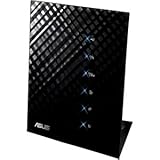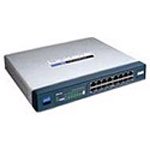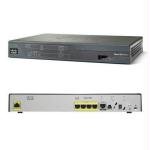Types and Qualities of WANs
Exactly what is a WAN?
You will find two prevailing definitions of the Wide Area Network (WAN). It meaning of a WAN is really a network that spans large physical locations, usually to interconnect multiple Neighborhood Systems (LANs). The sensible meaning of a WAN is really a network that traverses a public network or commercial company, using one of many WAN technologies
What exactly are its Primary Components?
The primary components for any WAN are hubs, switches and modems. These elements are referred to below within the hardware section.
CPE - Products around the customer premises are known as customer premises equipment (CPE).
The customer is the owner of the CPE or rents the CPE in the company. A copper or fiber cable connects the CPE towards the service provider's nearest exchange or central office. This cabling is frequently known as the neighborhood loop, or "last-mile".
DTE/DCE - Products that put data around the local loop are known as data circuit-terminating equipment, or data communications equipment (DCE). The client products that pass the information towards the DCE are known as data terminal equipment (DTE). The DCE mainly offers an interface for that DTE in to the communication link around the WAN cloud.
Hardware
Inside a WAN you'll need various hardware components for this to operate. The normal products of hardware that you'll want inside a WAN are:
Router - A digital device that connects a lan (LAN) to some wide area network (WAN) and handles the job of routing messages backward and forward systems. Works at layer 3, and makes choices using IP addresses.
Switch - A switch is really a network device that chooses a path or circuit for delivering one of information to the next destination. Works at layer 2, and uses MAC addresses to transmit data to fix destination.
Modem - Short for modulator/demodulator, a modem allows a pc to talk with other computer systems over telephone lines. Works at layer 1, where signals are converted from digital to analogue and the other way around for transmission and receiving.
Wan Standards
WANs operate inside the OSI model using layer 1 and layer 2 levels. The information link layer and also the physical layer. The physical layer methods describe how you can provide electrical, mechanical and functional connections towards the services supplied by the Web service provider. The information link layer defines how information is exemplified for transmission to remote sites.
Encapsulation
Encapsulation may be the wrapping of information inside a particular protocol header. Keep in mind that WANs operate in the physical layer and also the data link layer from the osi model which greater layer methods for example IP are exemplified when sent over the WAN link. Serial connects support an array of WAN encapsulation types, which should be by hand specified. These kinds include SDLC, PPP, Frame delay etc. No matter WAN encapsulation used it should be identical on sides from the indicate point link.
Packet and Circuit Switching
Circuit switching and packet switching are generally utilized in high-capacity systems.
Nearly all switched systems today get data over the network
through packet switching.
Circuit-switching is much more reliable than packet-switching. Circuit switching now has wrinkles and costly, packet switching is much more modern.
General Routing Issues
Exactly what is a Routing Protocol?
A routing protocol is really a protocol that identifies how hubs communicate and exchange info on a network. Each router has prior understanding of their immediate neighbours and knows the dwelling from the network topology. The hubs know this since the routing protocol shares these details.
Protocol
RIP (Routing Information Protocol) was probably the most generally uses methods on internal systems. Hubs use RIP to dynamically adapt changes towards the network connections and communicate details about which systems hubs can achieve and also the distance together. RIP may also be stated to face for Relaxation in Pieces in mention of status that RIP has for breaking suddenly and rendering a network not able to operate.
Routing Calculations
Distance Vector
This kind of routing protocol mandates that each router simply inform its neighbours of their routing table. The length vector protocol is also called the bellman-ford formula.
Link Condition
This kind of routing protocol mandates that each router conserve a partial map from the network. The hyperlink condition formula can also be termed as Dijkstra's formula.
IGRP
IGRP is a kind of distance vector routing protocol introduced by 'cisco' accustomed to exchange routing data inside a autonomous system. Distance vector methods measure distances and compare routes. Hubs which use distance vector must send any some of the routing table inside a routing update message at regular times to every neighbour router.
Addressing and Routing
Exactly what does routing mean?
Routing is the procedure of determining how you can move packets in one network to a different.
The directions also called routes could be learned with a router utilizing a routing protocol then the details are passed from router to router along the way from the destination.
IP Address's
Every machine attached to the internet is designated an Ip. A good example of an Ip could be 192.168..1. IP addresses are displayed in decimal format to really make it simpler for humans to know but computer systems communicate in binary form. The 4 amounts that separate an Ip are known as Octets. Each position includes eight bits. When put into together you receive 32 bit address. The objective of each octet within an Ip would be to create classes of IP addresses that may be designated inside a network. You will find three primary classes that people cope with Class A, B and C. The octets of the Ip are split up into two parts Network and Host. Inside a class A address the very first octet may be the network portion, this determines which network the pc goes to, the final octets from the address would be the hosts that belongs towards the network.
Sub netting
Sub netting enables you to definitely create multiple systems inside a class A, B or C address. The subnet address may be the address utilized by your LAN. Inside a Class C network address you'd possess a subnet mask of 255.255.255.. A subnet mask identifies which portion is network and that is host. For instance 192.168.6.15 the very first octet three octets would be the Network address and also the last octet to be the host(Workstation). You should subnet a network because gateways have to forward packets with other LANS. By providing each NIC around the gateway an Ip along with a Subnet mask it enables the gateways to route packets from LAN to LAN. When the packet gets to its destination, the gateway then uses the items of the subnet area of the Ip to determine which LAN to transmit the packets.
Circuit Switched Leased Lines
A circuit switched network is a that determines a devoted circuit (or funnel) between nodes and devices prior to the customers may communicate. Here are a few terminologies connected having a Circuit switched network.
Frame relay is really a telecommunication service created for cost-efficient data transmission between neighborhood systems (LANs)
Fundamental rate interference is really a service utilized by small company for internet connectivity. An ISDN BRI provides two 64 Killerbytes per second digital channels towards the user.
Primary rate interface (PRI) is really a telecommunications standard for transporting voice and knowledge transmissions between two locations
All data and voice channels are ISDN and operate at 64kbit/s
Packet Switching
http://world wide web.raduniversity.com/systems/2004/PacketSwitching/primary.htm - _Toc80455261
Packet switching describes methods by which messages are split up into small packets before they're sent. Each packet will be sent on the internet. In the destination the packets are put back together in to the original message. Packet switching primary difference from Circuit Switching is the fact that the communication line is not devoted to passing messages in the source towards the destination. In Packet Switching, different messages may use exactly the same network assets within the same time frame period.
http://en.wikipedia.org/wiki/Asynchronous_Transfer_Mode
Asynchronous Transfer Mode (ATM) is really a cell relay, packet switching network and protocolwhich encodes data into small fixed-sized cells.
ISDN can be used to hold voice, data, video and pictures across a mobile phone network. ISDN means integrated services Digital Network. Isdn offers customers having a 128kbps bandwidth. This is accomplished through frame relay. Frame relay complements and offers something between ISDN, that provides bandwidth at 128 Killerbytes per second and Asynchronous Transfer Mode which works in somewhat similar fashion to border relay but at speeds from 155.520 Megabyte per second or 622.080 Megabyte per second. Frame relay is dependant on the older X.25 packet switching technology and it is accustomed to transmit analogue signals for example telephone conversations.
PSDN means packet switched data network and it is an information communication network. Packet switched systems don't begin a physical communication signal such as the public telephone does (circuit switched network) Packets are sent on the fixed length basis and designated having a source along with a destination address. The packets then depend around the hubs to see the address and route the packets with the network.
Mobile and Broadband Services
Digital Customer line(DSL) is principally accustomed to bring high bandwidth connections to houses and small business's on the copper wire phone line. This really is are only able to be accomplished should you stay within the plethora of the phone exchange. DSL offers download rates as high as 6mbps permitting continuous transmission of video, audio and three dimensional effects. DSL is placed to exchange ISDN and contend with the cable modem in supplying multimedia to houses. DSL functions by hooking up your phone line towards the telephone office over copper wires which are twisted together.
Asymmetric Digital Customers Lines are most generally employed for home customers. It possesses a high data transfer speed but a lesser upload speed. Using ADSL, as much as 6.1 megabits per second of information could be sent downstream and as much as 640 Killerbytes per second upstream.
http://en.wikipedia.org/wiki/Symmetric_Digital_Customer_Line
Symmetric Digital Customer Lines are an electronic subcriber line which runs more than one set of copper wires. The primary distinction between ADSL and SDSL may be the improvement in upload and download speeds. SDSL enables exactly the same upstream data rate and downstream data rate as ADSL upstream can be quite slow.
[http://searchnetworking.techtarget.com/sDefinition/],,sid7_gci558545,00.html
HDSL High bit-rate Digital Customer Line, among the earliest types of DSL, can be used for wideband digital transmission inside a corporate site and between your telephone company along with a customer. The primary sign of HDSL is the fact that provides equal bandwidth both in directions.
IDSL is really a system by which information is sent at 128 Killerbytes per second on the regular copper phone line from the user to some destination using digital transmission.
The Neighborhood Loop allows operators for connecting straight to the customer via copper local loops after which add their very own equipment to provide broadband along with other services. This method involves operators being able to access local exchange structures for connecting to some network of copper lines which connect these to houses and companies. BT is one particualr Local Exchange. The neighborhood loop hooking up the phone exchange to many customers is capable of doing transporting wavelengths well past the three.4 kHz maximum.
Advantages of choosing DSL
DSL can offer virtually immediate transmission of voice, data and video over regular copper phone lines. A DSL connection can eliminate delays when waiting to download information and graphics from the web. It offers customers with an inexpensive high-speed internet connection. Another advantage is the fact that a DSL connection is definitely on-line (just like a LAN connection) without any waiting here we are at dialling or hooking up.
You will find now a lot more than ten million broadband connections within the United kingdom. By December 2005 there have been 9.792 million broadband connections within the United kingdom and also the average broadband occupy rate throughout the 3 several weeks to December was a lot more than 70,000 each week.













